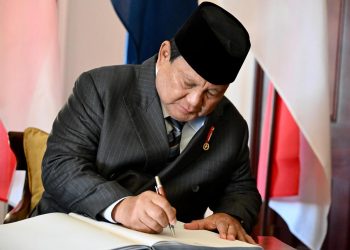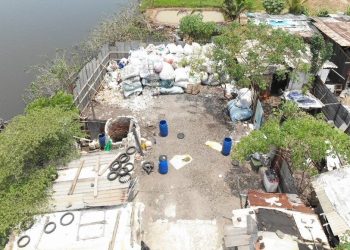Jakarta, Indonesia Sentinel — Indonesia continues to grapple with leprosy, reporting a total of 12,798 new cases, making it the country with the third-highest number of new cases globally. The Indonesian government is intensifying efforts to eliminate leprosy, with a target of becoming free from these diseases by 2030.
According to CNN Indonesia, the latest data from the country’s Ministry of Health (Kemenkes), Indonesia recorded 14,376 new leprosy cases in 2023, trailing only India, which reported 107,851 cases, and Brazil, with 22,773 cases.
The situation remains critical in 2024, with health officials already identifying 12,798 new cases, the majority of which are classified as multibacillary leprosy, a severe form of the disease. The data underscores the persistent public health challenge posed by leprosy in Indonesia.
“Approximately 90% of the cases are multibacillary, and 9.33% of cases involve children. The target is to reduce this to below 5%,” said Ina Agustina Isturini, Director of Communicable Disease Prevention and Control at the Ministry of Health, as reported by CNN Indonesia.
Men are disproportionately affected, with only 4,579 cases reported among women. Additionally, 5.75% of cases fall into grade two, indicating visible disabilities caused by the disease.
Provinces with the Highest Leprosy Rates
The Ministry of Health identified 13 provinces with the highest leprosy prevalence among both children and adults:
- East Nusa Tenggara (NTT)
- Southeast Sulawesi
- Central Sulawesi
- West Sulawesi
- Gorontalo
- North Sulawesi
- Maluku
- Central Papua
- North Maluku
- South Papua
- Southwest Papua
- West Papua
- Papua
The data highlights that leprosy remains a significant public health issue in Indonesia, requiring serious attention across various regions.
Government Efforts
The Indonesian government is intensifying efforts to achieve leprosy elimination by 2030 by implementing various strategies to eliminate Neglected Tropical Diseases (NTDs). According to Antara, the government has outlined five key strategies, Including:
- First, early detection and prompt treatment using Multi-Drug Therapy (MDT) for six to 12 months.
- Second, mass drug administration (MDA) in high-prevalence areas.
- Third, active surveillance to identify cases quickly.
- Fourth, public education and health promotion to reduce stigma and raise awareness.
- Fifth, cross-sector collaboration to accelerate the elimination of leprosy.
Therefore, through early detection strategies, mass treatment, and cross-sector collaboration, the Ministry of Health (Kemenkes) is accelerating various programs aimed at controlling, preventing, and educating communities in endemic areas.
Challanges
While Indonesia has made progress in managing leprosy, significant challenges remain, including social stigma, delayed diagnoses, and low public awareness and adherence to treatment.
The persistent social stigma surrounding leprosy remains a significant obstacle. Many individuals avoid seeking treatment due to fear of ostracization, which exacerbates their condition.
“Stigma and discrimination severely impact case detection. Many patients hide their condition, refuse to acknowledge their diagnosis, and ultimately forego treatment, leading to worsening symptoms,” Ina explained.
However, the government still optimistic and total elimination remains the primary goal, with a vision of “Zero New Cases, Zero Disabilities, and Zero Stigma.”
Read Also:
Indonesia Leads with Highest Crocodile Attacks in the World, Over 1.000 Attacks in the Past Decade
As Indonesia works to reduce its leprosy burden, health authorities emphasize the need for increased public awareness, early detection, and continued medical research to combat both the disease and the stigma that surrounds it.
(Raidi/Agung)


























